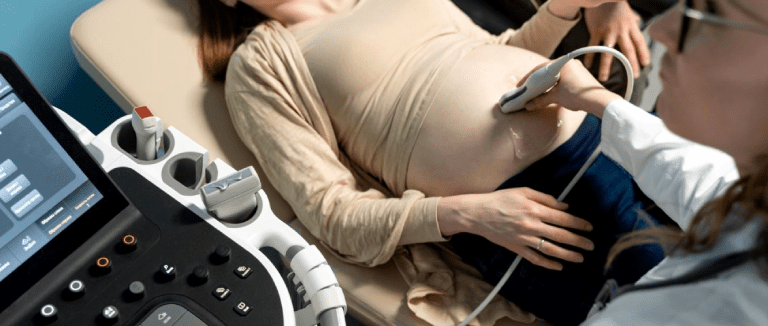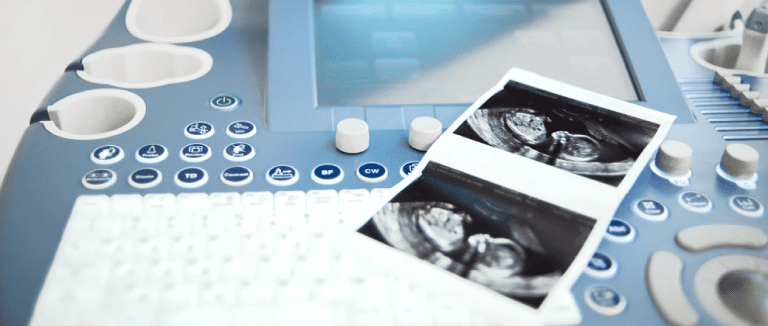Understanding Detailed Ultrasound: Purpose, Procedure, and Importance
Detailed ultrasound is a diagnostic technique that uses high-frequency sound waves to visualize specific organs or systems. This method produces clear images of organ structures and provides valuable medical information. It is commonly used for various purposes, including pregnancy monitoring and evaluating abdominal or pelvic organs. Detailed ultrasound is especially important for offering a thorough assessment of a baby's growth and well-being during pregnancy. As for timing, it is most often performed between the 18th and 22nd weeks of pregnancy and is frequently known as the "20-week ultrasound" or "anomaly scan."

What is it?
Detailed ultrasound is a medical imaging technique that utilizes high-frequency sound waves to visualize specific organs or systems within the body. This method delivers clear, high-resolution images of organ structures and essential diagnostic details. It is widely used for various medical purposes, including monitoring pregnancy and evaluating abdominal or pelvic organs. Detailed ultrasound is especially important for a thorough evaluation of a baby's development and well-being during pregnancy. As for when it is performed, detailed ultrasound is typically scheduled between the 18th and 22nd weeks of gestation, and is often referred to as a "20-week scan" or "anomaly ultrasound."
When is it Done?
It is most often scheduled between the 18th and 22nd weeks of pregnancy to allow for a comprehensive evaluation of the baby's health. During this assessment, the baby's anatomical structures are carefully examined, allowing early detection of possible concerns and the introduction of timely intervention plans. This process is vital for supporting healthy fetal development. If you're curious about the latest period for conducting a detailed ultrasound, it may be performed after the 22nd week if the healthcare provider considers it necessary.
Importance and Advantages
Detailed ultrasound is highly important during pregnancy because it allows healthcare professionals to identify possible problems with the baby's health at an early stage and begin treatment promptly. The key benefits of detailed ultrasound include:
- Detailed ultrasound is performed to carefully evaluate the baby's anatomical structure. Reviewing organs, bones, brain development, and other vital anatomical features allows for early identification of potential concerns.
- This procedure supports the prompt detection of congenital anomalies or developmental disorders. An early diagnosis enables healthcare professionals to plan appropriate treatments and management, which is crucial for protecting the baby's health.
- Detailed ultrasound is also applied to determine the possible impact on the baby's health in pregnancies with genetic or additional risk factors. The findings guide both the expectant mother and healthcare team in understanding any potential threats.
- Expectant mothers may discover the baby's gender during a detailed ultrasound, which can strengthen emotional ties and assist the family in preparing for the new addition.
- Detailed ultrasound remains a key method for monitoring the health of both mother and baby throughout pregnancy. This examination is essential for detecting potential complications and establishing suitable treatment approaches.
The Examination Process
The process of detailed ultrasound is typically quick and painless. This examination provides essential information about the baby's health, allowing for more precise monitoring throughout pregnancy. The detailed ultrasound procedure is made up of 5 stages:
- Preparation Stage: The expectant mother generally does not need to wear special clothing, but the abdominal area is cleansed with gel prior to the examination. This gel improves the contact between the ultrasound probe and the skin.
- Application Stage: The expectant mother is positioned on her back, and a special gel is spread over the abdominal area by the ultrasound technician or doctor. Next, the ultrasound probe is gently moved across the abdomen to allow sound waves to effectively reach the internal organs.
- Imaging Stage: Images created by the reflections of sound waves are instantly displayed on a computer screen. During this stage, the baby's organs, bone structure, gender, and other important anatomical details are examined.
- Measurements and Evaluation Stage: Key indicators like the baby's size, heart rate, and organ development are assessed and recorded. This phase is essential for evaluating whether the baby's growth and health are progressing as expected.
- Explanation of Results: Following the detailed ultrasound, the collected images and measured values are reviewed. The expectant mother receives information about the baby's development and current health status.
Throughout the entire process, if the healthcare professional observes any abnormalities, they may resort to additional tests and treatment methods.

Result Evaluation
Detailed ultrasound results play a critical role in the prenatal screening process. They contain important information about the baby's development. During the anatomical assessment, the baby's organs, bone structure, and gender are examined in detail. If any abnormalities or developmental issues are detected, they are communicated to the parents.
Biometric measurements are taken to assess the baby's growth rate and monitor overall development. Additionally, the baby's heart rate and circulatory system are examined to obtain important information about cardiovascular health. During this process, the condition of the expectant mother's uterus is also evaluated, ensuring whether the baby is developing in a healthy environment. Detailed ultrasound results enable expectant mothers to closely monitor the pregnancy process, facilitating the planning of necessary precautions and interventions.
Risk Assessment
Risk assessment in detailed ultrasound takes into account factors such as the expectant mother's genetics, age, pregnancy history, and gathered clinical data. Through this evaluation, any potential risks are identified and, if needed, further tests and treatments are recommended.
* Liv Hospital Editorial Board has contributed to the publication of this content .
* Contents of this page is for informational purposes only. Please consult your doctor for diagnosis and treatment. The content of this page does not include information on medicinal health care at Liv Hospital .
For more information about our academic and training initiatives, visit Liv Hospital Academy
Frequently Asked Questions
What is the purpose of a detailed ultrasound?
A detailed ultrasound helps evaluate the baby's anatomy and detect potential developmental or structural issues early.
When should a detailed ultrasound be performed?
It is typically done between the 18th and 22nd weeks of pregnancy for the most accurate results.
Can a detailed ultrasound determine the baby’s gender?
Yes, in most cases, the baby’s gender can be identified during a detailed ultrasound if the baby’s position allows.
Is a detailed ultrasound painful?
No, the procedure is painless and non-invasive, involving only the use of an ultrasound probe and gel.
How long does a detailed ultrasound take?
The procedure usually lasts between 20 and 45 minutes, depending on the baby's position and the findings.
What can a detailed ultrasound detect?
It can identify organ development, bone structure, genetic anomalies, and other potential health concerns.
Is fasting required before a detailed ultrasound?
No, fasting is not necessary. However, you may be advised to have a moderately full bladder for clearer imaging.
Can I bring someone with me to the scan?
Yes, many clinics allow a partner or family member to accompany you during the ultrasound.
What if an abnormality is detected?
If any issues are found, your doctor may recommend additional tests or follow-up scans for further evaluation.
Why choose Liv Hospital for detailed ultrasound?
Liv Hospital offers advanced imaging technology and expert specialists to ensure accurate, safe, and personalized evaluations during pregnancy.


